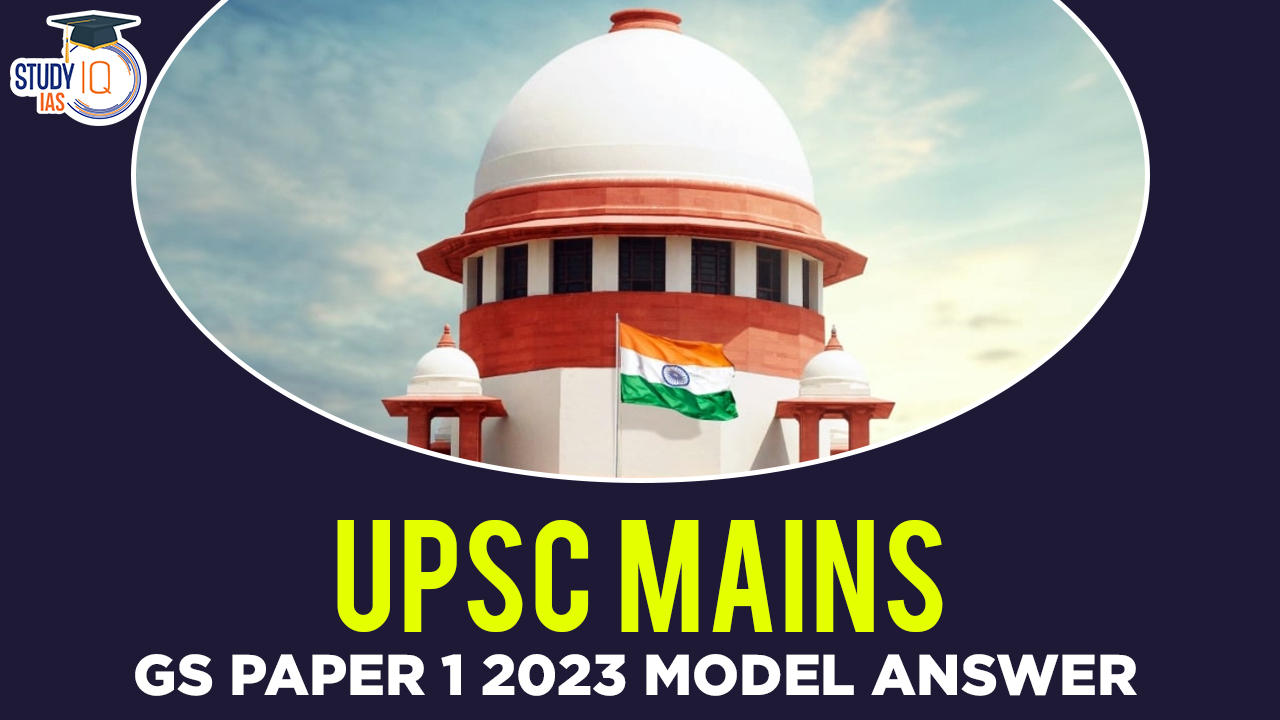Q11.What are the main features of Vedic society and religion? Do you think some of the features are still prevailing in Indian society? (15 M) – History
Introduction:
- Introduce by giving the time period of the Vedic period (mention its division into Early Vedic and Later Vedic ) and write 2-3 lines on continuity and change in society and religion over time.
Body:
| Domain | Early Vedic Society | Later Vedic Society |
| Nature and Structure of Society | Tribal and largely an egalitarian society.
|
Social Hierarchy arose with Chaturvarna system and Duties assigned to each varna:
The three Varnas (Brahmans, Kshatriya, Vaishya) in combination were perceived as men of higher Varnas, i.e. traivarnikas. |
| Position of Women | Society was patriarchal. However, the women in Early Vedic society enjoyed a respectable position. Women were educated and they had access to the tribal assemblies. There are also instances of women who composed hymns.
Ex: Lopamudra, Gosha and Apala had contributed to the hymns of RigVeda. |
|
Main features of Vedic Religion:
| Early Vedic Religion | Later Vedic Religion |
|
|
Features From Vedic Period that are still prevailing in Indian society
- Evolution into Contemporary Hinduism: Vedic religion laid the foundation for contemporary Hinduism, incorporating Vedic rituals, beliefs, and deities into its framework.
- Example: Many practices, such as the worship of deities like Shiva, Vishnu, and Devi, can be traced back to Vedic roots.
-
- Continuation of Polytheism: Hinduism, which evolved from Vedic traditions, maintains a belief in numerous gods and goddesses.
- For example, Lord Shiva, Lord Vishnu, and Goddess Durga are widely worshipped.
- Karma and Reincarnation: Concepts like karma and reincarnation still play a crucial role in shaping spiritual beliefs and actions. Many Indians believe in the consequences of their actions and the cycle of rebirth.
- Caste System: The varna system, though officially abolished, still influences Indian society. Caste identities persist, affecting marriage, occupation, and social interactions.
- Patriarchy: Patriarchy continues in Indian society despite of modernisation and women are being treated as subordinates in several families.
- Religious Ceremonies: The tradition of conducting yajnas (sacrificial ceremonies) and pujas (worship) continues, reflecting the enduring influence of Vedic rituals. Rituals and ceremonies remain an integral part of Indian life. Weddings, festivals, and daily prayers involve reciting hymns and performing rituals similar to Vedic practices.
- Cultural Continuity: Vedic chants and mantras are still recited in religious ceremonies, preserving oral traditions. For instance: Vedic chanting in Banaras.
- Art and Iconography: Temple sculptures and art often depict Vedic deities and stories, bridging the gap between ancient and modern cultural expressions.
- Continuation of Polytheism: Hinduism, which evolved from Vedic traditions, maintains a belief in numerous gods and goddesses.
- Spiritual Philosophy: Vedic concepts like dharma (righteousness), moksha (liberation), and the pursuit of knowledge remain central to Indian philosophy and spirituality. For instance: spiritual discourse still dominates debates and discussion in India and India is known as spiritual powerhouse of World.
- Modern Gurus and Teachings: Contemporary spiritual leaders and gurus draw inspiration from Vedic texts and impart their wisdom to seekers worldwide. Example Sadguru and Baba Ramdev.
- Agrarian Economy: Agriculture remains a crucial occupation in India, carrying on the tradition of the Aryans who were primarily farmers.
- Cattle and Cow Worship: Cattle, especially cows, continue to hold cultural and religious significance, as seen in the reverence for cows in modern Hinduism. For instance: Goushala, gourakshak and grants given to farmers by Governemnt to protect cows.
Conclusion:
While there have been significant social and cultural changes over millennia, the legacy of the Vedic era remains intertwined with contemporary Indian society, reflecting the enduring power of these ancient traditions in the nation’s cultural fabric.
Check out the UPSC Mains GS Paper 1 2023 Analysis with detailed expatiation of the topics of Mains GS Paper 1 By the Study IQ Experts.





















 WhatsApp
WhatsApp